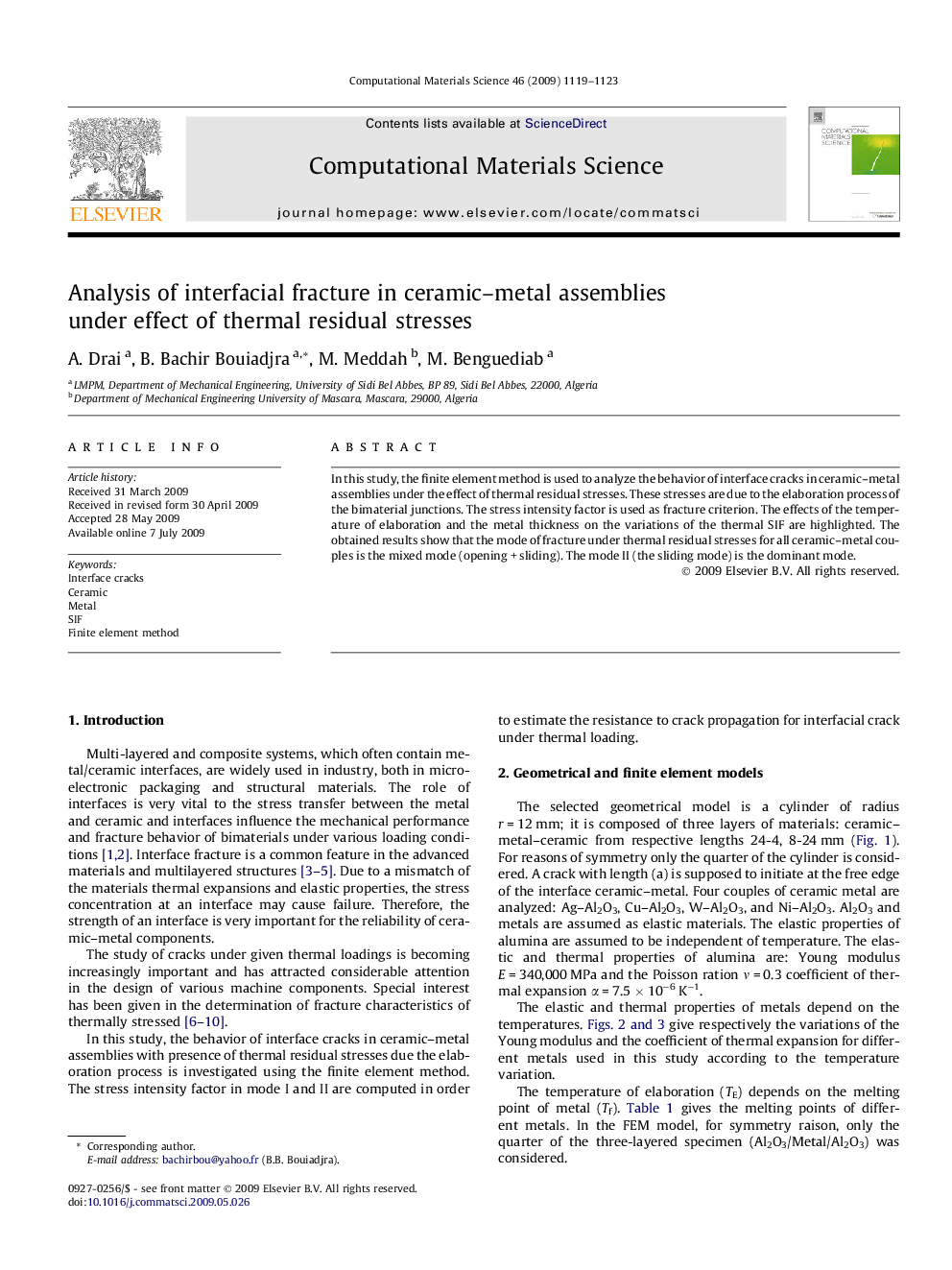| Article ID | Journal | Published Year | Pages | File Type |
|---|---|---|---|---|
| 1563163 | Computational Materials Science | 2009 | 5 Pages |
Abstract
In this study, the finite element method is used to analyze the behavior of interface cracks in ceramic–metal assemblies under the effect of thermal residual stresses. These stresses are due to the elaboration process of the bimaterial junctions. The stress intensity factor is used as fracture criterion. The effects of the temperature of elaboration and the metal thickness on the variations of the thermal SIF are highlighted. The obtained results show that the mode of fracture under thermal residual stresses for all ceramic–metal couples is the mixed mode (opening + sliding). The mode II (the sliding mode) is the dominant mode.
Related Topics
Physical Sciences and Engineering
Engineering
Computational Mechanics
Authors
A. Drai, B. Bachir Bouiadjra, M. Meddah, M. Benguediab,
